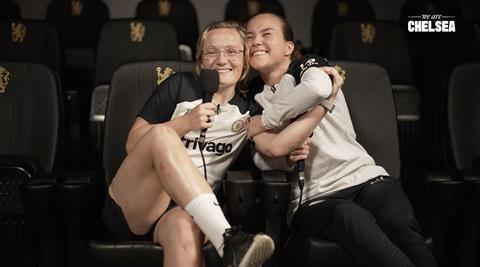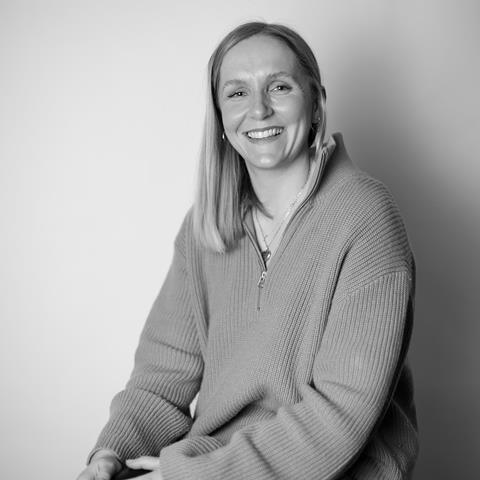Louise Gwilliam, talent director at podcast production house Crowd Network, outlines how brands and teams can take advantage

Women’s sports have never been so popular. We’re seeing record levels of engagement—not only are fans attending matches, but engagement extends to the media that supporters consume. Only five men’s Premier League clubs had more TikTok views than Chelsea Women in September, according to the latest Women’s Sport Trust report into visibility. And the most-viewed Team GB athlete on TikTok at the 2024 Paris Olympics was female 400m hurdler Lina Nielsen.
Despite this, the market’s earning potential remains untapped. The number of brands that authentically support women’s sports is disappointingly low. Not only are brands missing out on promoting gender equality within sports, but they’re also neglecting the thousands of highly engaged fans that consume audio and video content on the subject. These audiences exist, but there’s a gap in the market for the wrap-around-content that they can engage with.
And these audiences keep growing. Increased media coverage over the past decade has brought women’s sports firmly into the spotlight. The 2023 Women’s World Cup Final saw a peak audience of around 14.8 million viewers in the UK alone, with global viewership of the tournament surpassing two billion people—a huge increase from the 1.12 billion that watched the 2019 edition.
But it isn’t just women’s football that is enjoying increased coverage and attention. Teams in the WNBA, the most famous women’s basketball league in the US, are seeing record ticket sales and revenue, with new stars like Caitlin Clark and Angel Reese driving up in-person attendance and viewing figures each season. In women’s cricket, The Hundred has drawn record attendees and viewers with 580,000 tickets sold last season. There has also been record demand for the 2025 Women’s Rugby World Cup, with over 55,000 tickets sold (just in the presale) for the opening and final matches. And the growth of women’s sports was underlined at the 2024 Paris Olympics, the first Games to achieve gender parity in its competing athletes. We’re finally starting to pay women’s sports the attention they deserve.
Increased viewership has also brought increased revenue. Women’s sports are predicted to generate over £764.5 million in revenue in 2024—a more than 300% increase from its 2021 valuation, according to Deloitte. With the prediction that revenue from women’s sports will hit £1 billion by 2030, this incredible economic surge is set to continue. Despite this prosperity, women’s sport is still a relatively untapped market, and brands are missing a trick when it comes to leveraging opportunities in the industry.
And it isn’t just the on-field action that offers exciting financial prospects. Partnering with the athletes themselves is another lucrative avenue for investment. 80% of British people view female athletes as positive role models for girls, and 60% found female athletes relatable, a Mintel report found. Considering these statistics, it is understandable why there is a growing movement to recruit female athletes as brand representatives: they offer an authentic and engaging way of reaching fans.
The tide is beginning to turn as more and more brands realise how engagement with female athletes and women’s sports teams isn’t just the right thing to do, but a profitable strategic decision. Athlete, team and league sponsorships in women’s professional sports increased by 22% from 2023 to 2024 - claims Sponsor United. The most salient growth in sponsorships was visible in women’s golf and tennis, with deals also confirmed in women’s basketball and football. There’s a clear trend across the market that is not specific to a particular game. Women’s sport is growing holistically, and draws dedicated, engaged audiences that businesses can access.
The success of women’s sports and the popularity of female athletes present a unique opportunity for companies to pioneer change. They can reach new audiences, form partnerships with inspirational athletes, and create a loyal brand following by springboarding off the opportunities the women’s sport industry offers. However, while some companies like Visa and Unilever have recognised this potential by collaborating with women’s athletes and teams, women’s sport marketing and sponsorship platform Parity found that women’s sports receive only 1% of sponsorship money. There are clearly still plenty of opportunities for businesses to take advantage of.
Podcasts can fill this gap. They’re not just audio files: they form the nucleus of an entire content machine and sit at the heart of marketing strategies. Episodes can be released on both audio and video platforms—across YouTube, Spotify, TikTok, Instagram, and Facebook—so one podcast episode provides countless opportunities for brands to reach large audiences.
Chelsea FC Women’s We Are Chelsea podcast emphasises this potential. The team wanted to bring their fanbase closer to players than ever before; the players’ candid relatability was brought to life through the intimate nature of podcasting. By creating appealing audio and visual podcasts and uploading them—in full and as clips—across their channels, the team have created several content forms using podcasting as the genesis. It’s a natural fit for a holistic content strategy.
Two weeks after their podcast’s official launch, full episodes and clips garnered over a million views across Chelsea’s digital channels. This success has continued to sky-rocket: Chelsea’s TikToks received 50 million views in summer 2024—more than any other women’s sports team globally. The We Are Chelsea podcast is a perfect example of seamlessly integrating audio and video to create a multidimensional content experience for followers.
It’s a huge win for Skoda, the podcast’s sponsors, too. Along with an audio and video advert in every episode, the Skoda logo is displayed on the players’ mic covers. This clever way of featuring the brand in all social assets and across YouTube videos underlines the creative opportunities that podcasting can provide brands.
Podcasting allows brands and athletes to challenge the status quo in audio, video and beyond. Brands can blaze a trail to engage communities in new, creative ways that provide stronger, longer, and more emotional connections.
The creative opportunities are endless. We have the athletes and the content creators, and we’re primed and ready to go. We know women’s sports fans, and female athletes themselves, have been undervalued and underserved for far too long. Podcasting can provide them with a holistic content strategy—one that enables brands to invest effectively in the lucrative market of women’s sports while giving consumers the authentic content they deserve from the athletes and teams they love. It’s a win-win for everyone.
There are still so many opportunities that businesses can explore. We just need more brave and disruptive brands to realise this potential and grow women’s sports even further.

Louise Gwilliam is talent director at Crowd Network




No comments yet